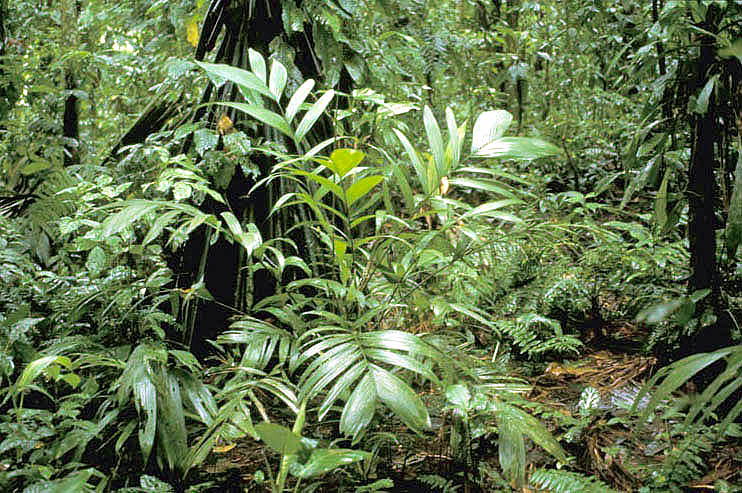Bactris setiflora
Burret
Original
reference:
Notizbl. Bot. Gart. Berlin-Dahlem 14: 328 (1939)
Type:
Schultze-Rhonhof 2233 – Ecuador
Neotype:
Pedersen 97671 – Ecuador
Morphology:
Understorey palm. Stems clustered, to 5 m long, 2.5-5 cm in diameter. Leaves 1.5-2.5 m long; pinnae 25-35 on each side, regularly inserted in one plane; central pinnae 45-70 cm long, 3-4.5 cm wide; leaf axis covered with brown or black bristles and spines. Inflorescence 25-50 cm long, densely covered with dark brown bristles on most parts; branches 10-25, to 15 cm long. Female flowers scattered along the branches. Fruit black, flattened at top, rostrate, 2-2.5 cm in diameter; fruiting perianth with a short calyx and a slightly longer, densely bristly corolla; staminodial ring absent.
Distribution:
Endemic to a small area E of the Andes in Ecuador, on terra firme.
Notes:
Plants appearing to be hybrids between this species and Bactris corossilla are sometimes found (Pastaza: Bergmann #97854; #97856).
Conservation
status: Endangered
–
IUCN criteria:
B1, B2a
(Borchsenius & Skov 1999)
Common
names:
Antsibara
–
Quichua
(Orr & Wrisley 1981).
Chibu
–
Quichua
(H.B. Pedersen #97671).
Chonta brava
–
Spanish
(B. Bergmann #97800).
Kamanchai
–
Shuar
(H.B. Pedersen #97670).
Shibu
–
Quichua
(B. Bergmann #97801 and additional references).
Uses:
Fruits are eaten
(B. Bergmann #97801).
The soft or liquid endosperm is eaten as a snack
(B. Bergmann #97800).
The stem is used as a punt pole in canoes
(B. Bergmann #97801).
|
Latest posts by admin (see all)
- Aluminium Rattan Garden Furniture Design Ideas - September 11, 2019
- Popular Gardens and Parks in Sheffield, United Kingdom - September 18, 2018
- How New Eco-Friendly Garden Benches Help Plants and Consumers in the UK - February 26, 2018




Discussion: